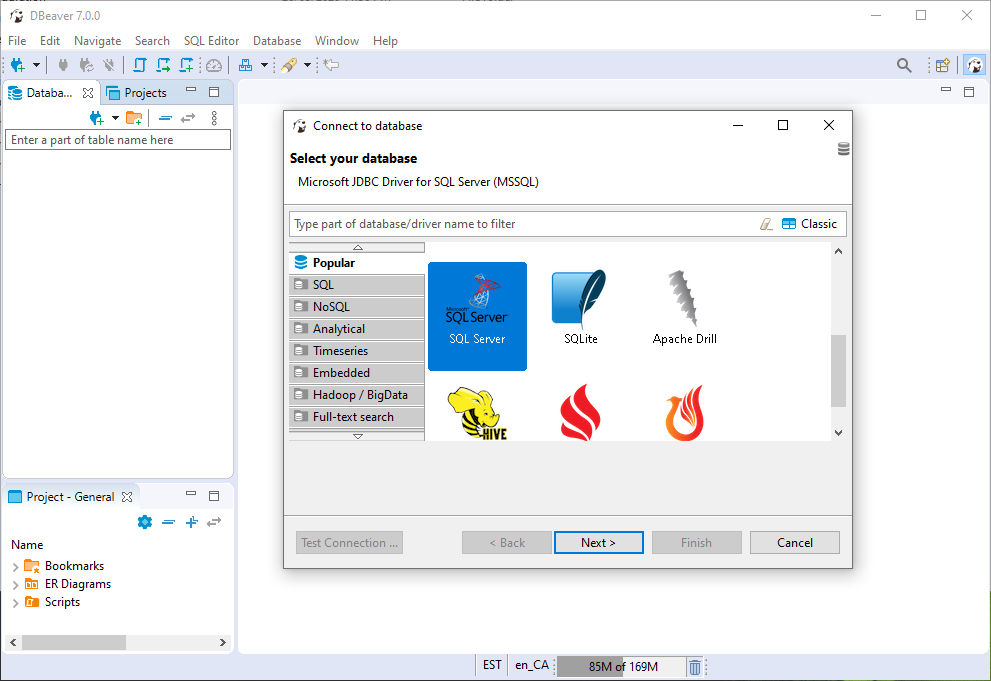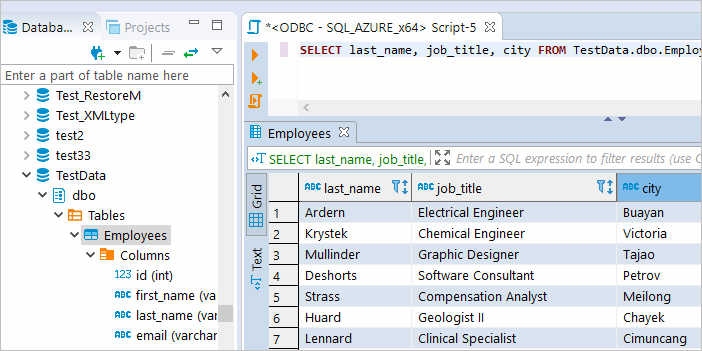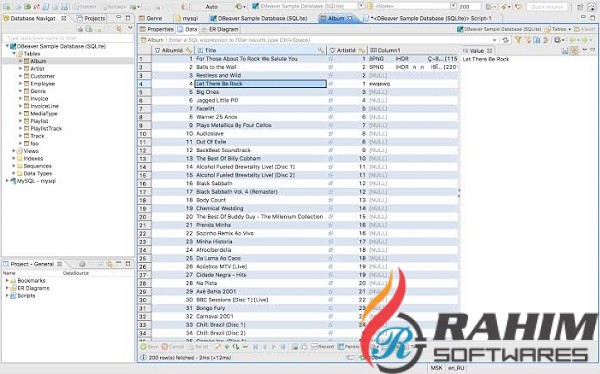


To avoid the 'heap error' in DBeaver, try opening Driver Manager and editing the URL Template to include;memory=false as shown in the screenshot below. (You may need to close and re-launch DBeaver for the change to take effect.). DBeaver is a universal database management tool for everyone who needs to work with data in a professional way. With DBeaver you are able to manipulate with your data like in a regular spreadsheet, create analytical reports based on records from different data storages, export information in an appropriate format.
Once you've installed DBeaver, you'll probably want to connect to a database. Norton password manager vault. below are instructions for connecting to SQL Server using DBeaver on a Mac.

Note that, although this tutorial uses SQL Server, DBeaver supports many different database management systems.
Launch DBeaver
Click on the DBeaver icon (either in your Launchpad or the Applications folder) to launch the DBeaver application.
Launch the New Connection Wizard
If this is the first time you've launched DBeaver, you'll probably be prompted with the Create new connection dialog.
Expand the SQL Server node, select jTDS driver, and click Next >.
For this tutorial I selected jTDS driver, but by all means select another driver if you prefer.
If the Create new connection wizard doesn't automatically appear when you open DBeaver, go to Database > New Connection to initiate this wizard.
Enter Connection Settings
Enter the connection settings for the SQL Server instance that you'd like to connect to.
If the SQL Server instance is running on your local machine, use localhost.
Also click Test Connection to see if there are going to be any problems with the connection or not.
Download Driver Files (if required)
The connection wizard will tell you if you need to download any driver files. If you do, select the file/s and click Download.
Success Dialog Box
Once the driver has downloaded, a Success dialog is displayed. Click OK.
This dialog box would have appeared at the previous step if you didn't need to download a driver.
Title: Redis icon: icon-redis background: bg-red-600 tags: categories: Database date: 2020-12-26 19:33:15 intro: This is a redis quick reference cheat sheet that lists examples of redis commands. Edit Cheat Sheet When you encounter a Redis instance and you quickly want to learn about the setup you just need a few simple commands to peak into the setup. Of course it doesn't hurt to look at the official full command documentation, but below is a listing just for sysadmins. Redis cheat sheet exploit.
Continue with the Connection
Now that the driver has been downloaded, click Next > to continue with the connection.
Network Settings
This step gives you the option of entering any network settings that are required to access the SQL Server.
In this case, the SQL Server is running locally, so leave the default settings and click Next >.
Finish
Change any settings as required. For this tutorial, I left them all at the default settings.
Click Finish to create the connection.

To avoid the 'heap error' in DBeaver, try opening Driver Manager and editing the URL Template to include;memory=false as shown in the screenshot below. (You may need to close and re-launch DBeaver for the change to take effect.). DBeaver is a universal database management tool for everyone who needs to work with data in a professional way. With DBeaver you are able to manipulate with your data like in a regular spreadsheet, create analytical reports based on records from different data storages, export information in an appropriate format.
Once you've installed DBeaver, you'll probably want to connect to a database. Norton password manager vault. below are instructions for connecting to SQL Server using DBeaver on a Mac.
Note that, although this tutorial uses SQL Server, DBeaver supports many different database management systems.
Launch DBeaver
Click on the DBeaver icon (either in your Launchpad or the Applications folder) to launch the DBeaver application.
Launch the New Connection Wizard
If this is the first time you've launched DBeaver, you'll probably be prompted with the Create new connection dialog.
Expand the SQL Server node, select jTDS driver, and click Next >.
For this tutorial I selected jTDS driver, but by all means select another driver if you prefer.
If the Create new connection wizard doesn't automatically appear when you open DBeaver, go to Database > New Connection to initiate this wizard.
Enter Connection Settings
Enter the connection settings for the SQL Server instance that you'd like to connect to.
If the SQL Server instance is running on your local machine, use localhost.
Also click Test Connection to see if there are going to be any problems with the connection or not.
Download Driver Files (if required)
The connection wizard will tell you if you need to download any driver files. If you do, select the file/s and click Download.
Success Dialog Box
Once the driver has downloaded, a Success dialog is displayed. Click OK.
This dialog box would have appeared at the previous step if you didn't need to download a driver.
Title: Redis icon: icon-redis background: bg-red-600 tags: categories: Database date: 2020-12-26 19:33:15 intro: This is a redis quick reference cheat sheet that lists examples of redis commands. Edit Cheat Sheet When you encounter a Redis instance and you quickly want to learn about the setup you just need a few simple commands to peak into the setup. Of course it doesn't hurt to look at the official full command documentation, but below is a listing just for sysadmins. Redis cheat sheet exploit.
Continue with the Connection
Now that the driver has been downloaded, click Next > to continue with the connection.
Network Settings
This step gives you the option of entering any network settings that are required to access the SQL Server.
In this case, the SQL Server is running locally, so leave the default settings and click Next >.
Finish
Change any settings as required. For this tutorial, I left them all at the default settings.
Click Finish to create the connection.
That's it. We just made a new connection to SQL Server with DBeaver.
Dbeaver Ms Access Code
The DBeaver interface is now displayed:

